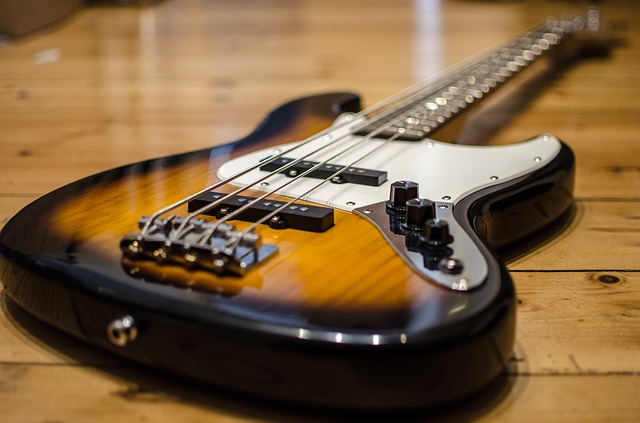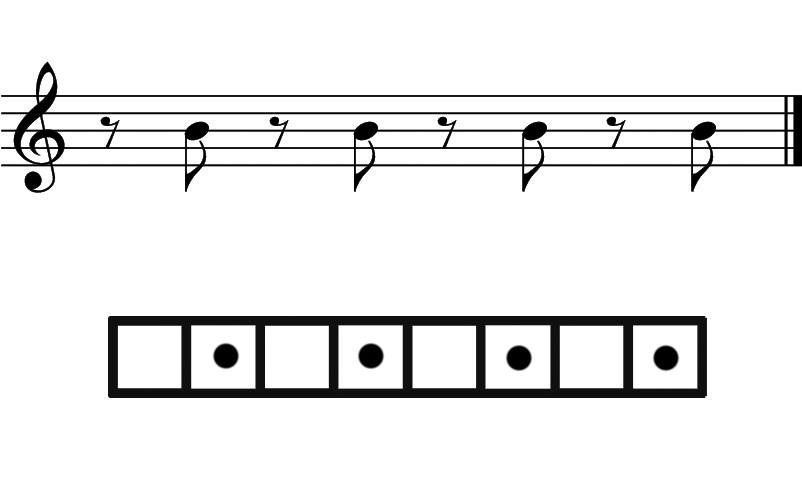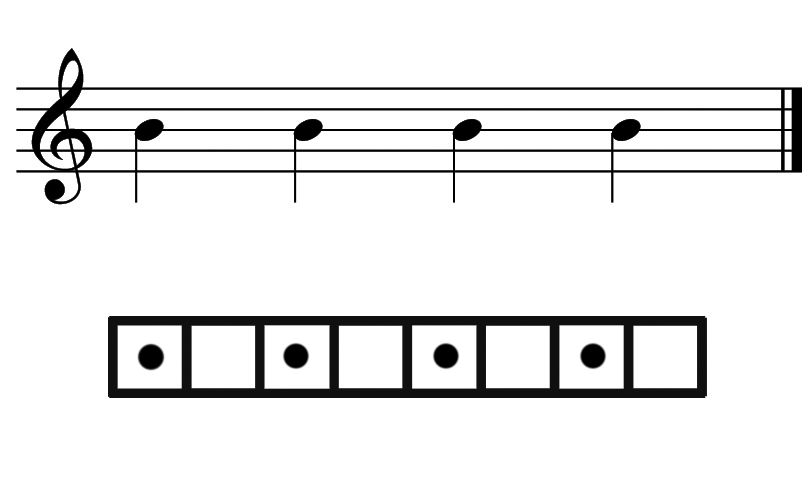
Regardless of the genre, the bass is an essential part of any song. There is no music (in modern popular genres) without a bass. Many people think that writing a bassline is the role of the music arranger or the producer, but I believe that all songwriters need to have a basic understanding, and ideally, all songwriters should know how to create a bassline because a good bass can make a huge difference in how the final song will sound.
This post will be in connection with the topic of music arrangement. So let’s take a look at some of the basics you need to know to start writing basslines.
Root control
The most important thing is that the bass always, ALWAYS have to play the root note on the first beat of the bar! Especially if there is a chord change. If the bass doesn’t play the root on the first beat of the bar, it will cause confusion.
This is because bass controls the chord! Think about it for a moment. If the guitar or the piano plays the notes C – E – G, but the bass plays the note A, then it’s not a C major chord but an Am7 chord!
Obviously, if the chord is something like G/B, then you need to put the third (B) in the bass on the first beat.
Anticipation
However, keep in mind that the first beat can be anticipated in rhythm, either with an eighth note or with a quarter note. Here is an example when the bass note is anticipated, and they play it a quarter note earlier. The song is “You Song” by Rita Ora (songwriter: Ed Sheeran)

As you can see, when the bass plays on the first beat, it always plays the root note of the chord. But in the fourth bar, the last note is a Db, which is the root note of the NEXT chord! This is a quarter note anticipation.
The anticipation makes it FEEL LIKE the bass is always playing on the first beat, but we can see that it’s not. These anticipations in rhythm make the bassline sound more exciting, more interesting.
How do I know when to use these anticipations?
I give you the exact formula in the online songwriting course so you can learn how to make your bass rhythms more interesting. With my formula, you can create very effective rhythms even from the most boring bass lines.
Fifths
Besides the root note, the second most common note in the bass is the fifth. For example, take a look at the bassline of the song “Sir Duke” by Stevie Wonder:

As you can see, the bass is almost entirely using only the root and the fifth, except for the ending in the fourth bar. The first beat is always the root (and no anticipation here), then the fifth, then the root again, one octave higher.
Sevenths
The minor seventh note in the bass creates a bluesy or funky sound for the song. For example, you can hear seventh notes in the bass in “Attention” by Charlie Puth:

(I transposed it to the key of C major for easier understanding.)
You can see that the bassline in this song is almost entirely root notes, fifths, and minor seventh notes.
Notice that the minor seventh notes are usually followed by the root note!
Rhythm
Rhythm is the most neglected topic in music, but arranging music is mostly about rhythm. Besides knowing the most common notes, you need to create a good rhythm if you want to write an effective bassline.
Finding the right rhythm is about finding the right balance between upbeats and downbeats.


If too many notes are on the downbeats, your bassline will sound dumb and boring. That’s why we need to utilize upbeats (sometimes they are called “syncopation”).
How can you find the right balance?
First, you need to listen to a lot of different songs and listen to their basslines. Then you just use your intuition and experiment with different placements in rhythm. Does it sound good? Then use it!
Another thing that can help you (and it’s kind of a hack), I created a formula that helps you create better rhythms. It is the first chapter of the songwriting essentials course.
Repetition
Repetition is another important aspect of music. And there are many different kinds of repetitions (I talk about all of them in the course). Basslines typically have repetition in rhythm. Take a look at the previous examples. All of them! The rhythm of the bassline is mostly the same one or two bars, repeating over and over again.
This repetition (with some variations) creates a period which we call a “groove”.
So if you have a motif of one bar or two bars, you just need to repeat the same rhythm over the other chords. As you see it in the previous examples. And sometimes you need to add some variations, a few extra notes because sometimes pure repetition is just sound too boring or monotonous.
The kick drum
It may come in handy if you already have a drumbeat because the bass always needs to work together with the kick drum. (also called a bass drum)
What does this mean?
It means that the bass should play SOME or ALL the notes of the kick drum.
For example, if the rhythm is very simple, and the bass and the kick play only like two notes, then they usually play the very same rhythm. This is what is happening in the song “Say” by John Mayer:

The bass and the kick drum are playing exactly the same rhythm (regardless of the length of the notes!). The bass is very simple, playing only root notes, and also notice that some of the notes are anticipated in rhythm.
But sometimes not all the notes are the same in the bass and the kick drum, they only “meet” with SOME of the notes. There are really no rules here. You can always experiment with this, and use whatever you FEEL is good.
Take a look at the bass and kick of the song “Dark Necessities” for example:

You can see that the bass and the kick are playing different rhythms, but they “meet” with each other some of the time!
Conclusion
It’s very important to start the bass with the root note of the chords. But keep in mind that the first beat can be anticipated in rhythm.
The fifth note in the bass is the second most common note.
The minor seventh note makes the bass sound bluesy or funky.
Experiment with the balance of the upbeats and downbeats because too many notes on the downbeats make your bassline sound boring.
Use repetition in the rhythm of the bass.
Always try to work together with the kick drum.
The secret pattern behind successful songs
Get the eBook for $4.99

